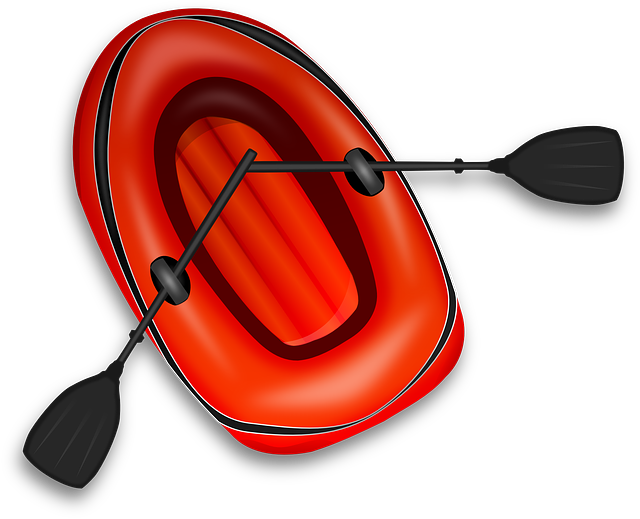Decoding Boat Battery Types: A Guide to Lead-Acid, Deep Cycle, and Advanced Marine Power Solutions
When selecting a boat battery, it's crucial to compare the features and benefits of lead-acid, AGM, gel cell, and lithium-ion types. Lead-acid batteries are traditionally robust and cost-effective but are heavier and have a shorter lifespan compared to their modern counterparts. AGM batteries, …….

When selecting a boat battery, it's crucial to compare the features and benefits of lead-acid, AGM, gel cell, and lithium-ion types. Lead-acid batteries are traditionally robust and cost-effective but are heavier and have a shorter lifespan compared to their modern counterparts. AGM batteries, which safely absorb electrolyte solutions, are maintenance-free, offer high energy density, and perform well in extreme temperatures with rapid recharge rates, making them ideal for marine environments. Gel cell batteries enhance vibration resistance and longevity, providing both starting and deep-cycle capabilities. Lithium-ion batteries lead with their lightweight design, higher energy density, and longer lifespan, offering efficient power storage solutions for boaters who prioritize performance and longevity. Each battery type has distinct advantages in terms of weight, lifespan, maintenance, and performance across a range of conditions. Considering the unique demands of maritime activities, boat owners must select a battery that aligns with their vessel's size, power requirements, and operational conditions to ensure optimal performance, longevity, and safety on the water.
When navigating the complex world of marine power, understanding the types of boat batteries is key to ensuring your vessel’s systems run smoothly. This article delves into the various boat battery options available, from the traditional lead-acid batteries to the cutting-edge lithium solutions. We will explore their distinct characteristics and optimal applications, guiding you through the selection process for the best marine battery to suit your boating needs. Whether you’re an angler charting remote waters or a cruiser venturing into international seas, selecting the right boat battery is paramount for safety and convenience.
- Understanding Boat Battery Types and Their Uses
- Lead-Acid Boat Batteries: The Traditional Power Source
- Deep Cycle Batteries for Marine Applications
- Alternative Technologies: AGM, Gel, and Lithium Batteries in Boats
Understanding Boat Battery Types and Their Uses

When venturing out on the water, a reliable boat battery is an indispensable component of your vessel’s electrical system. Boat batteries come in various types, each designed to cater to specific marine applications. Understanding these differences is crucial for maintaining optimal performance and reliability. The most common types of boat batteries include lead-acid, absorbed glass mat (AGM), gel cell, and lithium-ion.
Lead-acid batteries have been the traditional power source for boats for many years. They are known for their robust construction and affordability, making them a popular choice for applications that require deep discharge and frequent recharging. However, they are heavier than other options and have a shorter lifespan. AGM batteries offer an improved version of lead-acid technology with enhanced performance in extreme temperatures, longer cycles, and better resistance to vibrations, which is particularly beneficial on marine environments. These batteries also have a higher energy density and are maintenance-free. Gel cell batteries are similar to AGM batteries but with a gel electrolyte instead of absorbent glass fibers. This design provides excellent vibration resistance and a longer service life, making them suitable for both starting and deep-cycle applications on boats. Lithium-ion batteries represent the latest advancement in boat battery technology. They are significantly lighter than traditional lead-acid batteries and offer higher energy density, which means they can hold more power for their size. Additionally, they have a longer lifespan, faster recharge times, and excellent performance in a wide range of temperatures. For these reasons, lithium-ion batteries are becoming increasingly popular among boaters who demand the best in performance and longevity. Regardless of the type chosen, ensuring proper maintenance and understanding how to use your boat battery effectively will enhance safety and enjoyment on the water. Boat owners should carefully consider their specific needs and usage patterns when selecting a battery to ensure they have the right power source for their marine adventures.
Lead-Acid Boat Batteries: The Traditional Power Source

Lead-acid boat batteries have been the traditional power source for marine applications for decades, owing to their robust construction and reliability in a wide range of conditions. These batteries are known for their heavy-duty performance, making them suitable for starting large engines or providing stable power for trolling and other deep-cycle demands on a vessel. The lead-acid design typically comprises six cells, each containing lead dioxide and sponge lead, which react during discharge to produce electricity. This proven technology offers a high ampere-hour (Ah) capacity, enabling consistent power output that is critical for boating needs. While modern advancements have introduced lighter and more efficient alternatives, the reliability and cost-effectiveness of lead-acid boat batteries continue to make them a popular choice among recreational and commercial mariners alike. When selecting a lead-acid battery for your boat, it’s important to consider factors like the battery’s capacity, reserve capacity, and cranking amps to ensure it meets the specific power requirements of your vessel and is compatible with your boat’s electrical system. Regular maintenance, including keeping the terminals clean and ensuring proper charging, is essential for maximizing the lifespan of your lead-acid boat battery.
Deep Cycle Batteries for Marine Applications

When it comes to powering a vessel, deep cycle batteries for marine applications are a fundamental component. These specialized batteries are designed to provide sustained energy over prolonged periods, making them ideal for boats where consistent electrical demand is common. A boat battery of this type is constructed with thicker plates and a larger plate surface area compared to starting batteries, which allows for more ampere-hours, meaning they can handle repeated discharges without suffering the same diminished capacity that would affect other types of batteries.
Boat owners typically opt for deep cycle batteries because they are less sensitive to depth of discharge; they can be fully drained and recharged many times without compromising their lifespan. This durability and performance make them suitable for a range of marine applications, from trolling motors to onboard electronics and lighting systems. In the context of boat batteries, deep cycle batteries are available in various types, including lead-acid, AGM (Absorbent Glass Mat), gel cell, and lithium-ion technologies. Each offers different advantages in terms of weight, longevity, maintenance requirements, and performance in diverse temperature conditions. When selecting a deep cycle battery for marine use, it’s crucial to consider the specific needs of your boat, such as the size of the vessel, the expected power draw, and the environmental conditions in which it will operate. This ensures that the chosen battery type will deliver optimal performance and longevity throughout its service life on the water.
Alternative Technologies: AGM, Gel, and Lithium Batteries in Boats

When considering the types of batteries suitable for marine applications, it’s essential to explore the alternatives to traditional lead-acid batteries, which include Absorbent Glass Mat (AGM), Gel, and Lithium batteries. AGM boat batteries are a popular choice due to their high performance and longevity. These batteries have a sponge-like material that absorbs the electrolyte solution, ensuring a consistent flow of energy without the risk of spillage, making them ideal for boats where space and safety are paramount. AGM batteries also offer rapid recharge capabilities and can handle deep discharge cycles, which is beneficial for marine use where power demands can fluctuate significantly.
Gel batteries, another alternative to lead-acid batteries, utilize a gel electrolyte instead of a liquid one. This design offers improved vibration resistance and a longer lifespan compared to traditional lead-acid batteries. They are also less prone to leakage, an important safety feature on a boat. Gel batteries provide consistent performance over a wide range of temperatures, which can be critical in the varying conditions encountered at sea. On the other hand, lithium boat batteries represent the cutting edge in marine power solutions. These batteries boast a high energy density, meaning they can store more power in a smaller and lighter package than AGM or Gel batteries. This advantage is particularly valuable for boats where weight and space are at a premium. Lithium batteries also have a higher cycle life and charge efficiency, ensuring that your boat’s electrical systems remain reliable and efficient throughout the vessel’s usage. When selecting a battery type for your boat, it’s crucial to consider these alternatives and how they align with your specific needs and the conditions in which your boat will operate.
When selecting a boat battery, it’s crucial to understand the different types available and their specific applications. Traditional lead-acid batteries have long been the mainstay for marine vessels, offering reliable power for starting and limited deep cycling. However, with advancements in technology, alternatives like Absorbent Glass Mat (AGM), Gel, and Lithium batteries are gaining popularity among boat owners, providing enhanced performance, longer service life, and increased safety. These modern options cater to a variety of marine needs, ensuring that whether you’re navigating calm waters or facing the high seas, your boat battery will meet the demands of your journey. In conclusion, the choice between these boat battery types depends on factors such as budget, power requirements, and maintenance preferences, ensuring that every boater can find the perfect fit for their nautical adventures.







